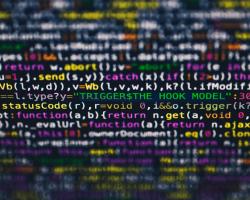Siting Experience Documents Only
Country
Keywords
Two Citizen Task Forces and the Challenge of the Evolving Nuclear Waste Siting Process
Two Citizen Task Forces and the Challenge of the Evolving Nuclear Waste Siting Process
Siting any nuclear waste facility is problematic in today's climate of distrust toward nuclear agencies and fear of nuclear waste. This study compares and contrasts the siting and public participation processes as two citizen task forces dealt with their difficult responsibilities. Though one dealt with a high level waste (Monitored Retrievable Storage - MRS) proposal in Tennessee in 1985-6 and the other with a proposed low level waste facility in Illinois (1988 and still ongoing), the needs of citizen decision makers were very similar.
LONG TERM GOVERNANCE FOR RADIOACTIVE WASTE MANAGEMENT ANNEX OF THE FINAL REPORT OF COWAM2 - WORK PACKAGE 4
LONG TERM GOVERNANCE FOR RADIOACTIVE WASTE MANAGEMENT ANNEX OF THE FINAL REPORT OF COWAM2 - WORK PACKAGE 4
The purpose of COWAM2 Work Package 4 (WP4) on "e;long term governance"e; was to identify, discuss and analyse the institutional, ethical, economic and legal considerations raised by long term radioactive waste storage or disposal on the three interrelated issues of: (i) responsibility and ownership of radioactive waste over long term, (ii) continuity of local dialogue between stakeholders and monitoring of radioactive waste management facilities, and (iii) compensation and sustainable development.
Tools for Local Stakeholders in Radioactive Waste Governance: Challenges and Benefits of Selected PTA Techniques WP1
Tools for Local Stakeholders in Radioactive Waste Governance: Challenges and Benefits of Selected PTA Techniques WP1
The investigation consists of three parts and shall provide an input to the – empirical – PTA-2 study to be undertaken by SCK•CEN (called “lens”):<br>A. Compilation of – selected – existing PTA methods and procedures identifying requisites, practices, benefits, and challenges to answer the key questions in the context of WP1 about a PTA “toolbox”: “What can you apply, when can you apply, and what is needed to apply?” The multi-dimensional context of a possible “PTA situation” is analysed; suitable and nonsuitable methods, techniques and procedures are discussed.<br>B.
Long Term Governance for Radioactive Waste Management WP4
Long Term Governance for Radioactive Waste Management WP4
The purpose of COWAM2 Work Package 4 (WP4) on "e;long term governance"e; was to identify, discuss and analyse the institutional, ethical, economic and legal considerations raised by long term radioactive waste storage or disposal on the three interrelated issues of: (i) responsibility and ownership of radioactive waste over long term, (ii) continuity of local dialogue between stakeholders and monitoring of radioactive waste management facilities, and (iii) compensation and sustainable development.
Guidance on the Selection of PTA Tools: For Stakeholders involved in Radioactive Waste Governance WP1
Guidance on the Selection of PTA Tools: For Stakeholders involved in Radioactive Waste Governance WP1
This research on "e;Guidance on the selection of PTA tools for stakeholders involved in radioactive waste governance"e; was performed under the umbrella of COWAM2-'Work Package 1' (WP1). Through a dialogue on enhancing involvement at a local level, WP1 allows local stakeholders to examine the issues they face in building a democratic local governance process. WP1 also tests how Participatory Technology Assessment (PTA) methods can offer a consensual framework and a platform for deliberative co-decision among scientific and societal actors at the local level.
European-level Guidelines for the Inclusive Governance of Radioactive Waste Management
European-level Guidelines for the Inclusive Governance of Radioactive Waste Management
CIP (Community Waste Management In Practice) is a research action gathering a wide spectrum of stakeholders from five European countries, interested in how society should manage the radioactive wastes that result from nuclear power production and/or from medical, military or industrial applications.
SEAB: Earning Public Trust and Confidence: Requisites for Managing Radioactive Wastes
SEAB: Earning Public Trust and Confidence: Requisites for Managing Radioactive Wastes
Final Report: Influence of Local Actors on National Decision-making Processes WP2
Final Report: Influence of Local Actors on National Decision-making Processes WP2
Work Package 2 (WP2) focused on the ways in which local stakeholders can influence national decision-making processes on radioactive waste management (RWM). The participants in WP2 were particularly interested in examining how local stakeholders could contribute to national debates. Their interest stemmed from the fact that participants from France, Spain and the United Kingdom — who made up the majority of the WP2 group — were engaged, as stakeholders, in the decision-making processes that were under way in each of those countries.
D1-9 Prospective Case Study - Romania
D1-9 Prospective Case Study - Romania
Impact of Nuclear Information on Young People's Knowledge and Attitudes: Methods/Participatory tools in an Educational Program WP1
Impact of Nuclear Information on Young People's Knowledge and Attitudes: Methods/Participatory tools in an Educational Program WP1
Despite in Romania nuclear research activities were started in early 50s, the nuclear power is very young. First NPP, Cernavoda Unit 1, about 600 MWe, was in operation since 1996. Next unit (Cernavoda Unit2) will be in operation at the end of 2007. Therefore, a relative low amount of high level waste was produced. However, some problems already exists in Romania, mainly related to historical radioactive wastes released by nuclear industry and research.
10-year Record of Learning Factual List of Activities and Investigated Topics, and of People Who Contributed to Them
The Partnership Approach to Siting and Developing Radioactive Waste Management Facilities
The Partnership Approach to Siting and Developing Radioactive Waste Management Facilities
History shows that the search for sites for radioactive waste management facilities has been marred by conflicts and delays. Affected communities have often objected that their concerns and interests were not addressed. In response, institutions have progressively turned away from the traditional “decide, announce and defend” model, and are learning to “engage, interact and co-operate”. This shift has fostered the emergence of partnerships between the proponent of the facility and the potential host community, as shown in a recent NEA study.
From Information and Consultation to Citizen Influence and Power: 10-year Evolution in Public Involvement in Radioactive Waste Management
LEARNING AND ADAPTING TO SOCIETAL REQUIREMENTS
LEARNING AND ADAPTING TO SOCIETAL REQUIREMENTS
Reflections on Siting Approaches for Radioactive Waste Facilities: Synthesising Principles Based on International Learning
Comments to BRC Meeting
Comments to BRC Meeting
Public Meetings on Nuclear Waste Management: Their Function and Organization
Public Meetings on Nuclear Waste Management: Their Function and Organization
This report focuses on public meetings as a vehicle for public participation in nuclear waste management. The nature of public meetings is reviewed and the functions served by meetings highlighted. The range of participants and their concerns are addressed, including a review of the participants from past nuclear waste management meetings. A sound understanding of the expected participants allows DOE to tailor elements of the meeting, such as notification, format, and agenda to accommodate the attendees.
Recovering Public Trust and Confidence in Managing Radioactive Waste
Recovering Public Trust and Confidence in Managing Radioactive Waste
The director of the Task Force on Civilian Radioactive Waste Management of the Secretary of Energy Advisory Board, United States Department of Energy, asked the National Academy of Public Administration, to convene a group of approximately one dozen individuals to attend a twoday "state-of-the-art" workshop on the issue of how institutions establish, maintain, or recover trust and confidence among significant members of their task environments.
PUBLIC CONCERNS AND CHOICES REGARDING NUCLEAR WASTE REPOSITORIES
PUBLIC CONCERNS AND CHOICES REGARDING NUCLEAR WASTE REPOSITORIES
Survey research on nuclear power issues conducted in the late 1970s has determined that nuclear waste management is now considered to be one of the most important nuclear power issues both by the U.S. public and by key leadership groups. The purpose of this research was to determine the importance placed on specific issues associated with high-level waste disposal. In addition, policy option choices were asked regarding the siting of both low-level and high-level nuclear waste repositories.
Radioactive Wastes: Publc Attitudes toward Disposal Facilities
Radioactive Wastes: Publc Attitudes toward Disposal Facilities
Although some observers have concluded that the technology required to assure safe disposal of nuclear wastes is currently available, others have expressed concern about the stability of the institutions that might be required to maintain the isolation of nuclear wastes. Questions about institutional stability and other factors associated with nuclear power and nuclear waste have been the subject of some study in public opinion research.
Yucca Mountain - Nevada's Perspective
Yucca Mountain - Nevada's Perspective
Yucca Mountain—that barren rise in the desert ninety miles from Las Vegas—is the nation‘s only site identified for the potential location of the first ge ological repository for commercially-generated HLNW and SNF. Many assume
that Yucca Mountain has geologic and climatic qualities that make it uniquely
suitable to isolate the thousands of metric tons of the world‘s most lethal, long lived waste currently accumulating at 104 operating nuclear power plants across the United States.
Unfortunately, Yucca Mountain is an exceptionally bad site,
Some Principles for Siting Controversial Decisions: Issues from the US Experience with High Level Nuclear Waste
Some Principles for Siting Controversial Decisions: Issues from the US Experience with High Level Nuclear Waste
Beginning with the role of "stakeholders" - those whose interests are, knowingly or unknowingly, affected - in the siting of noxious facilities, this paper seeks to develop principles for acceptable and democratically arrived at polices related to problems associated with advances in and products of science and technology. Although widely regarded as a necessary condition for success, the principles underpinning stakeholder involvement, such as representativeness, are often violated in practice.
SOCIAL ISSUES AND ENERGY ALTERNATIVES: THE CONTEXT OF CONFLICT OVER NUCLEAR WASTE
SOCIAL ISSUES AND ENERGY ALTERNATIVES: THE CONTEXT OF CONFLICT OVER NUCLEAR WASTE
In order to gain a satisfactory understanding of public attitudes toward issues in nuclear waste management, it is important to recognize the context in which the public views those issues. Nuclear waste, in the minds of the public, is just one aspect of the nuclear power issue. Nuclear power, in turn, is just one means of avoiding energy shortage.
Public Perceptions of Industrial Risks: The Context of Public Attitudes Toward Radioactive Waste
Public Perceptions of Industrial Risks: The Context of Public Attitudes Toward Radioactive Waste
The generation of knowledge regarding public risk perception general, and perception of risks associated with nuclear power and radioactive waste management in particular, requires the development and use of appropriate survey methodologies. One of the fundamental limitations of many studies of public risk perception is the assumption on the part of the investigators of similarity between themselves and their respondents. In such studies respondents are required to deal with problems of interest to and structured by the investigators.


